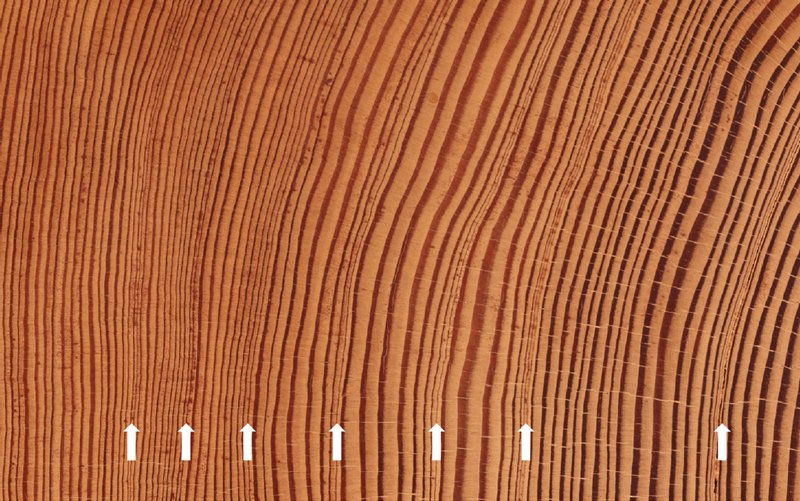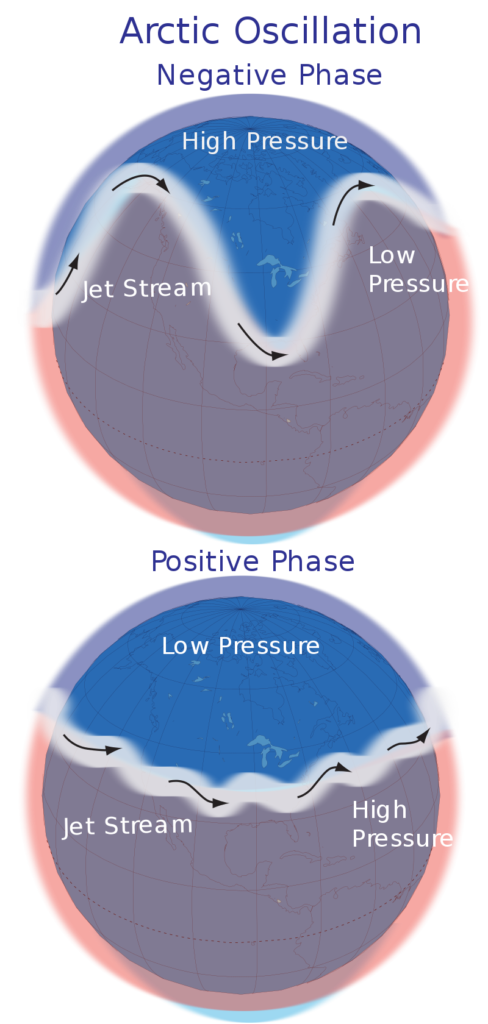Featured Image: Larch trees. Image courtesy North Cascades National Park, used with permission.
Authors: Olga V. Churakova Sidorova, Rolf T. W. Siegwolf, Marina V. Fonti, Eugene A. Vaganov, Matthias Saurer
Seemingly straight out of a fairytale, ancient trees are able to convey details about Earth’s complex history to the scientists willing and able to listen. Deep in the Siberian Arctic lie the secrets of past weather events, ocean currents, and droughts that occurred thousands of years ago, locked away in petrified wood and in the oldest living larch trees. We often hear in the news how the Siberian forest is victim to extreme drought and fire—something that is new as of the recent century. But how “new” are these events, and what exactly is perpetuating this new cycle?
These were questions Drs. Sidorova and colleagues asked in order to learn more about how our planet and particularly the Arctic, is responding to climate change. Instead of using a time machine, these researchers were able to look at the molecular structure of prehistoric tree rings to reconstruct weather patterns of the area all the way back to 516 CE, the time of the Persian and Roman Empires. By using this information, they were able to concretely link historical global circulation patterns (like the jet stream) to the perpetuation of drought and the forest fires of the modern day. They found that the jet stream shifted enormously during the second part of the first millennium, with seemingly permanent change in the 20th-21st centuries. This shift has led to pronounced droughts in the Arctic, which set the stage for the frequent fire events we see today.

In order to make these determinations, Sidorova and coworkers analyzed of the atoms in each tree ring to reveal historic precipitation, cloud cover, sunshine, humidity, and other aspects of weather. All atoms in Earth have isotopes, or different weights of the same element. These weight variants distribute unevenly across natural systems. For example, a lighter oxygen atom will evaporate faster and is more likely to represent water vapor, while a heavier oxygen atom will likely form the majority of precipitation. Using this information, Sidorova and coworkers reconstructed over a thousand years of weather patterns by determining the weight of oxygen and carbon atoms in each tree ring. After defining weather patterns (specifically precipitation), the researchers were then able to write a numerical equation that is able to predict the historical global air circulation patterns.

You are likely familiar with the terms “El Niño” and “La Niña” to describe wintertime weather patterns (or summertime for the Southern Hemisphere) to get an idea of whether you need to dust off your snow shovel or not. In our modern day, scientists are able to reliably predict the global movement of air currents, allowing for accurate descriptions of near future temperatures and precipitation. More specifically, the Arctic Oscillation describes how “steeply” the jet stream dips from the Arctic down to lower latitudes. A negative phase will lead to very cold Arctic and high latitude winters, or a La Niña, while a positive phase leads to a warmer winter, or an El Niño. Sidorova and coworkers used these global circulation patterns on their historical isotope data to reconstruct El Niño versus La Niña patterns in the Arctic, finding a stark decrease in precipitation (up to 80%) beginning in 1717 and continuing to present day. A decrease in precipitation has compounding effects on an ecosystem: early spring warming will cause early snowmelt and remove available water from the system through evaporation. This pattern causes a drought, which perpetuates differences in air circulation patterns, leading to less precipitation and further drought. An ecosystem that is subjected to prolonged drought is then vulnerable to intense wildfires.
This cycle of altered global air current movement, lack of precipitation, and increased temperatures and drought stress is a new (<200 years) pattern that can be found in several ecosystems around the globe. In high latitudes and in the Arctic, these self-sustaining weather patterns are increasingly common. Sidorova and colleague’s findings are invaluable as researchers define the specific causes of these new climate patterns. Their research directly contributes to cutting-edge climate change science, deepening our knowledge and enabling new mitigation and conservation strategies.
Ancient trees tell the story of modern climate change by Jessica Buser-Young is licensed under a Creative Commons Attribution-ShareAlike 4.0 International License.

